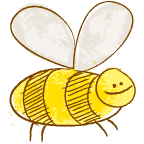Creative lesson plans bridge indoor and outdoor learning environments at A.M. Waddington Elementary School.
Most teachers recognize the educational value of a garden, but integrating outside time with the indoor-oriented curriculum takes creativity and hard work.
“Teachers want to do it, but they feel overwhelmed,” says Melissa Guillet, art teacher, master gardener and coordinator for the school’s garden program.
This dilemma inspired Melissa to develop the “15-Minute Field Trip.”
“I started telling all the teachers: ‘If I can take your kids outside for 15 minutes, they will get science and math and literacy,’” Melissa explains. “So I take the students and the teacher outside together, and we focus on different scientific inquiry and health subjects.”
Melissa coordinates with the other teachers to develop age-appropriate, relevant lessons for every grade. Topics and activities have included:
- Kindergarten—study of the five senses, ladybug study, parts of a plant, seed study, nature/insect/bird observation
- 1st grade—seed scavenger hunt, methods of seed dispersal, study and dissection of plants, fruit and flowers specimens (sunflowers work well)
- 2nd grade—insect and pollinators research, camouflage study, learning about the food chain, organic farming, pesticides and herbicides, the importance of a whole food diet
- 3rd grade—impact of farming on ecosystems, preventing and reducing pollution, recycling, food pantry donation project, study of plant reproduction
- 4th grade—rocks and minerals, building a potato clock, magnets, energy conservation study, recycling projects
- 5th grade—learning about micro worlds, exploring plant dyes, site survey to assess impermeable surfaces and sources of water pollution
“We demonstrate how the kids can gather data, analyze it, research and write about it,” Melissa says. “So teachers can see they don’t have to spend 45 minutes on each subject in the classroom when it’s been integrated into their time outside.”
After receiving a Whole Kids Foundation grant in 2012, the school was also able to purchase more garden tools and supplies so groups of children could more easily share the garden, as well as support materials for the teachers: science kits, clipboards, textbooks, nature books, a soil thermometer, magnifying lenses, bug catchers, games, books, posters and a series of laminated instruction cards (which kids can follow independently to work in the garden during recess if they wish).
Additional garden features that enhance the 15-Minute Field Trips are a ladybug house and a bee house; a weather station with a rain gauge, thermometers and an anemometer to measure wind speed; and a utility spool that was transformed into a work and observation station complete with magnifiers and other tools.
All of these investments make it easier for teachers to embrace the garden as an enhancement to their curriculum—instead of viewing it as a competing activity.
“Our overall goal is to make it easy for teachers to integrate the garden into their indoor lessons,” Melissa says. “Now the teachers are constantly asking me when they can schedule their next field trip!”
Plan Your Own “15-Minute Field Trip”
Melissa recommends the following resources to get started:
- How to Grow a School Garden by Arden Bucklin-Sporer and Rachel Kathleen Pringle
- The Nature Connection by Clare Walker Leslie (writing and drawing)
- Hands-On Nature from the Vermont Institute of Natural Science (featuring great puppet show scripts)
- No Student Left Indoors by Jane Kirkland (creating field guides)
- Access Nature from the National Wildlife Federation (activities)
Also check your local area for the Audubon Society's "Schoolyard Science for an Urban Eco-System" program, and visit our Whole Kids Foundation resource page for more ideas.



